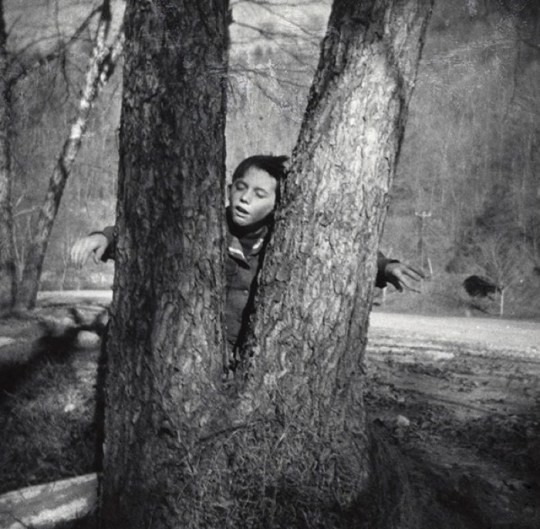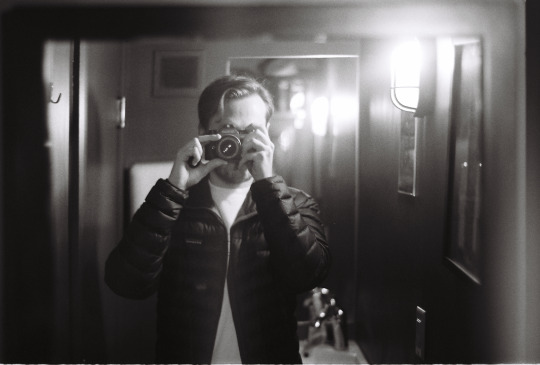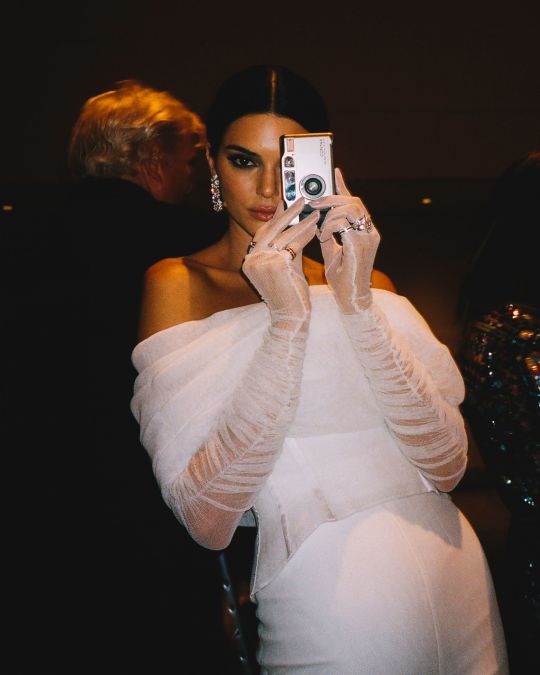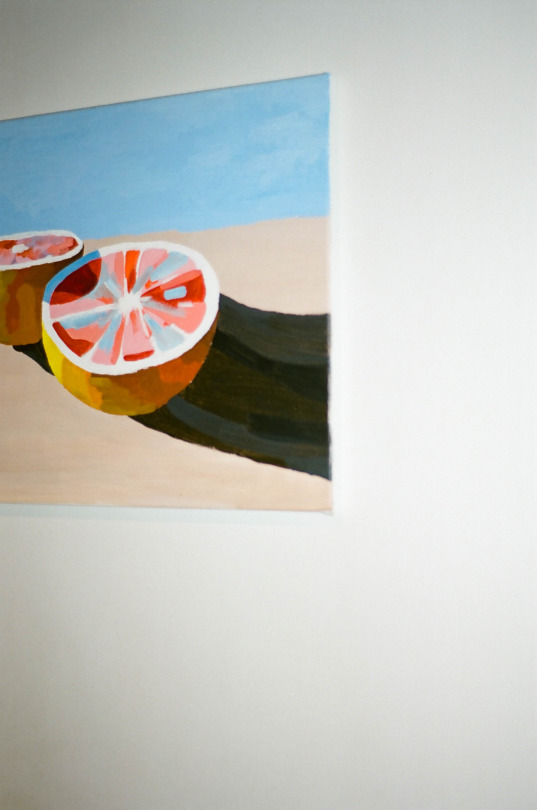#even the documentary that was supposed to be an unvarnished look at his life and career just left me with more questions
Text
.
#i think the one constant about being in this fandom#is that there are always more questions than answers#even the documentary that was supposed to be an unvarnished look at his life and career just left me with more questions#and at this point i've come to accept that we'll never know anything#but it's still annoying
10 notes
·
View notes
Text
Portraits, Dreams, and Me: A Complete Beginner’s Guide to Film Photography

VANCOUVER, B.C. – In autumn 1975, Wendy Ewald embarked on a bold photographic experiment.
The Detroit native had recently relocated to rural Kentucky, renting a small house on Ingram’s Creek, in southeastern Letcher County. As Ewald tells it, in PBS’ great new documentary, Portraits and Dreams, she was the first outsider to ever move into the area. That didn’t stop her from quickly establishing ties to the community. Soon, she found herself teaching photography to the community's 4th graders.
Being the 1970’s, the children’s lessons focused solely on film photography. Ewald taught them how to compose and capture an image, but also how to develop and print it. A rare skill set for any 9-year-old, the lessons gave students a chance to express themselves in ways previously unthinkable. The resulting photographs present Ingram’s Creek with a sort of fantastical-realism. Dreams and imagination blend with everyday realities of rural living. Adult issues, such as poverty and substance use, are relegated beyond the frame, giving the students freedom to explore their own thoughts and feelings. As Ewald explains to the audience, “Having a camera gives anyone power, but especially children.”

That's certainly been my finding.
While I would never call myself a photographer, I’ve been shooting pictures on film for over 10 years. In 2009, I purchased my first film camera, the Diana Mini, using my Urban Outfitters staff discount. Essentially a toy, the Mini served as a low-fi, low budget introduction to photography, creating colourful, high contrast images in either a square or rectangle format. The camera’s cheap parts often over-complicated what was supposed to be a simple process. Photos would turn out blurry or muddy, and Edmonton developers would struggle to properly print the unusual square format photos. At times, it felt like I was throwing money into a mini incinerator.

It wasn’t all bad. For every two rolls that didn’t turn out, one would. The more photos I took, the more I came to understand Diana’s quirks. I learned that my best photos tended to be taken in the afternoon with plenty of light. I learned which developers were comfortable processing the camera’s unconventional format. Slowly but surely, the image in my mind’s eye started to appear in the finished product, albeit inconsistently.
In the decade since, film photography has undergone a resurgence, becoming the de facto hobby for society’s cool and cultured. Included in the film pantheon are celebrities like Frank Ocean and Kendall Jenner, the latter of whom single-handedly increased demand for the Contax T2 after showing it off to Jimmy Fallon. While their snaps have certainly helped to cultivate an air of mystique and authenticity, the true-believer in me likes to think that celebrities shoot film for the same reason anyone else would. Because it scratches their creative itch. Because it gives them a chance to make their perceptions permanent.

Ewald’s relationship with her students is at the centre of Portraits and Dreams, but so too is the group’s relationship with the medium. Though life led them in different directions, the former students all share one thing in common: they’re still taking pictures. “Pictures, to me, it helps you hold onto your memories.” says former pupil Delbert Shepard at one point. “You’re able to pull back the good memories and let go of the bad ones.”
With this in mind, here’s a complete beginner’s guide to film photography (with particular advice for people in Vancouver/Canada).
Tools of the Trade
Perhaps the biggest barrier to film photography is knowing which camera to use. Having grown from uninformed novice to imperfect amateur, I can tell you the unvarnished truth: it really doesn’t matter. I shot on a Diana Mini because it was the first film camera I saw that I could afford. Your first camera could (and probably should) be different from that, but don’t let gear distract you.
In his highly encouraging book, Steal Like an Artist, writer/artist Austin Kleon explains that it’s easy to feel like a phony or an imposter when setting out into a new creative field. Learning a new skill is sometimes awkward or uncomfortable. You know what’s not awkward or uncomfortable? Scouring YouTube or Reddit for camera recommendations. But while a good Google search can alleviate discomfort, it will do you a disservice in the long run. Don’t do it. If you take one thing from this article, let it be this: the best camera is one you want to use and is, ideally, right in front of you.

That said, I would encourage complete beginners to start shooting with a disposable camera. The reason for this is three-fold. First, disposable cameras are cheap–for $15 you get everything you need to shoot, including the flash. Second, disposables are idiot proof. You don’t need to worry about loading film, or setting the aperture, or even taking off the lens cap. It’s literally point and shoot. Third, disposable cameras can be given to most box store photo-processing centres for development with no-hiccups or special costs. This includes big box chains like Walmart, or my personal favourite, London Drugs.
If this sounds too easy, that’s because it’s supposed to be. At this point, your only goal should be to take photos. You don’t get bonus points for suffering, or for slamming your head against the wall. Seriously. If disposable cameras are good enough for Dua Lipa, they’re good enough for you. Shoot a couple rolls, then maybe look into buying your own rig (second-hand, of course).
Quality > quantity
Once your camera is locked and loaded, the real fun begins.

In an earlier draft of this essay, I wrote that a benefit of film is that it tends to inject photos with a certain degree of style. I still think that’s true. Film looks different from the majority of what we’re exposed to on a given day, meaning your images will have a natural allure. But with great power comes great responsibility. Film is finite, meaning even novice photographers need to make some tough decisions.
Most crucially, what do you want to photograph? In On Being a Photographer: A Practical Guide, David Hurn argues the best photographers are “enthusiastic and knowledgeable about their subject matter” and plan ahead of the actual shooting. This applies to professional photogs, sure. But Hurn’s advice also extends to novices. He gives the example of a mother photographing their child at the beach, writing: “Eighty-five percent of all the ingredients of photography are encompassed by this single act. The mother has an intimate knowledge of her subject… She is enthusiastic in her love of the subject… Her job is simply to record the moment.” In other words, stick to what you know. Take pictures of your friends and family. Maybe try your hand at a cheeky photo-dump. Just make sure whatever you’re shooting sparks genuine interest.

On the matter of composition, I again point to Hurn, who believes photography consists of two fundamental elements: where you stand and when you release the shutter. The former, Hurn writes, can be predetermined, but the latter is largely a matter of chance (e.g., you can stand in front of the ocean, but you can’t control when the wave crashes). Because of this, the complete beginner is better off prioritizing quality over quantity. Focus on a single subject for multiple frames, rather than trying to capture multiple scenes. If you’re really bold, try shooting everything from a single spot, and adjusting the angle of your lens as you go.
When your roll is spent, get it developed. For beginners, that means paying a visit to your local 1-hour photo, such as London Drugs (LD). When you drop off your disposable/film tell them you want to get it processed and scanned. This keeps LD from printing your photos right away. Instead, they’ll send you a link to the scans, which are Instagram-ready. Seems like a small thing, but it will keep your costs low, and get your Likes flowing sooner. You can always print any favourites from the roll using LD’s online software.
Horizon Lines
With your first set of scans back from the shop, it’s time for a cool down period. Start with some self-reflection. Divide your photos into two groups: ones that worked, and ones that didn’t. Focus on the ones that didn’t–what’s off about them? Sometimes the answer is something simple, like you needed to use the flash. In other cases, the issue isn’t immediately clear. No matter. Use this as a reference to improve your work.
youtube
When you’re finished, try to find further sources of inspiration. In particular, bypass Instagram and invest in a high-quality photo book. Classics include Robert Frank’s The Americans, Annie Leibovitz’s Photographs, or Vancouverite Fred Herzog’s Modern Colours (photography, like most creative fields, suffers from a lack of diversity). Take heart that, at one point, these household names were complete beginners. Any notoriety occurred, because they took the first step. It’s like Delbert Shepard tells his former teacher in Portraits and Dreams: “[Photography] taught me the meaning of life and that there were no boundaries to what we could do and couldn’t do. It’s whatever we set our mind to.”
Watch Portraits and Dreams for FREE via PBS (VPN required)
Follow me on Twitter.
0 notes
Text
President Trump reveals himself as woefully uninformed about the basics of geography, incorrectly telling Indian Prime Minister Narendra Modi, “It’s not like you’ve got China on your border.” He toys with awarding himself the Medal of Freedom.
And, according to a new book by Washington Post reporters Philip Rucker and Carol D. Leonnig, Trump does not seem to grasp the fundamental history surrounding the attack on Pearl Harbor.
“Hey, John, what’s this all about? What’s this a tour of?” Trump asks his then-Chief of Staff John F. Kelly, as the men prepare to take a private tour of the USS Arizona Memorial, which commemorates the December 1941 Japanese surprise attack in the Pacific that pulled the United States into World War II.
“Trump had heard the phrase ‘Pearl Harbor’ and appeared to understand that he was visiting the scene of a historic battle, but he did not seem to know much else,” write the authors, later quoting a former senior White House adviser who concludes: “He was at times dangerously uninformed.”
“A Very Stable Genius” — a 417-page book named after Trump’s own declaration of his superior knowledge — is full of similarly vivid details from Trump’s tumultuous first three years as president, from his chaotic transition before taking office to special counsel Robert S. Mueller III’s Russia investigation and final report.
The story the authors unfurl, as they explain in the prologue, “is intended to reveal Trump at his most unvarnished and expose how decision-making in his administration has been driven by one man’s self-centered and unthinking logic — but a logic nonetheless.”
The book by the two longtime Post reporters — who were part of the team that won a 2018 Pulitzer Prize for its reporting on Trump and Russia — was obtained ahead of its scheduled release Tuesday.
Many of the key moments reported in the book are rife with foreign policy implications, portraying a novice commander in chief plowing through normal protocols and alarming many both inside the administration and in other governments.
Early in his administration, for instance, Trump is eager to meet Russian President Vladimir Putin — so much so, the authors write, “that during the transition he interrupts an interview with one of his secretary of state candidates” to inquire about his pressing desire: “When can I meet Putin? Can I meet with him before the inaugural ceremony?” he asks.
After the two leaders meet face-to-face for the first time — 168 days into his presidency at the Group of 20 summit in Hamburg — Trump promptly declares himself a Russia expert, dismissing the expertise of then-Secretary of State Rex Tillerson, who had worked closely with Putin since the 1990s, when Tillerson was working his way up the ExxonMobil corporate ladder and doing business with Russia.
“Tillerson’s years of negotiating with Putin and studying his moves on the chessboard were suddenly irrelevant,” the duo writes. “ ‘I have had a two-hour meeting with Putin,’ Trump told Tillerson. ‘That’s all I need to know. . . . I’ve sized it all up. I’ve got it.’ ”
In spring 2017, Trump also clashed with Tillerson when he told him he wanted his help getting rid of the Foreign Corrupt Practices Act, a 1977 law that prevents U.S. firms and individuals from bribing foreign officials for business deals.
“It’s just so unfair that American companies aren’t allowed to pay bribes to get business overseas,” Trump says, according to the book. “We’re going to change that.”
The president, they go on to explain, was frustrated with the law “ostensibly because it restricted his industry buddies or his own company’s executives from paying off foreign governments in faraway lands.”
The book, the duo writes in an author’s note, is based on hundreds of hours of interviews with more than 200 sources, corroborated, when possible, by calendars, diary entries, internal memos and even private video recordings. (Trump himself had initially committed to an interview for the book, the authors write, but ultimately declined, amid an escalating war with the media).
The White House did not immediately respond to requests for comment Wednesday.
One government aide tells the authors that Trump has destroyed the gravity and allure that used to surround the presidency, regardless of the Oval Office occupant.
“ ‘He’s ruined that magic,’ this aide said of Trump,” Rucker and Leonnig write. “ ‘The disdain he shows for our country’s foundation and its principles. The disregard he has for right and wrong. Your fist clenches. Your teeth grate.’ ”
Anthony Scaramucci, who served as Trump’s communications director for just 11 days, recounts the president’s response when he asks him, “Are you an act?”
“I’m a total act and I don’t understand why people don’t get it,” Trump replies, according to Scaramucci.
Yet the people in Trump’s administration and orbit don’t behave as if the president is simply playing a part or acting a role. At the Justice Department, then-Deputy Attorney General Rod J. Rosenstein and other senior officials run through private fire drills in case Trump triggers a “Saturday night massacre” — an allusion to the series of resignations under President Richard M. Nixon following his order to his attorney general to fire the Watergate independent special prosecutor.
“They prepared for several scenarios: If Trump fired [then-Attorney General Jeff] Sessions, if Trump fired Rosenstein, and if Trump ordered the firing of Mueller,” the authors write.
The officials have reason to be concerned, according to the authors, who report that Trump muses about using a memo by Rep. Devin Nunes (R-Calif.) as the justification for firing Rosenstein and reining in Mueller’s investigation. He also rails against his own Justice Department, furious that the agency isn’t being sufficiently loyal to him personally.
At one point, after the department blocks the release of what the president believes was a pro-Trump memo, he calls Kelly ranting. “ ‘This is my Justice Department. They are supposed to be my people,’ Trump told Kelly,” the authors write. “ ‘This is the ‘Deep State.’ . . . Mueller’s all over it.’ ”
Some details are more harmless than disconcerting. Early in his presidency, Trump agrees to participate in an HBO documentary that features judges and lawmakers — as well as all the living presidents — reading aloud from the Constitution. But Trump struggles and stumbles over the text, blaming others in the room for his mistakes and griping, “It’s like a foreign language.”
In another scene, Axios reported in December 2018 that former New Jersey governor Chris Christie and Trump met privately to discuss Christie possibly becoming his next chief of staff. After Christie respectfully turns down the job, he asks Trump how the details of their meeting leaked out, since it was just the two of them and first lady Melania Trump in the room.
“Oh, I did it,” said Trump, who has long vented about leakers, revealing himself to be among them.
Other moments have a darker tinge. Rucker and Leonnig write that during the early days of the Mueller investigation, both Donald McGahn, then the White House counsel, and Stephen K. Bannon, then a senior White House adviser, try to persuade Ty Cobb — the lawyer tasked, at the time, with overseeing the White House’s involvement in the probe — to remove Trump’s daughter Ivanka and son-in-law Jared Kushner, both senior advisers, from the White House staff, to protect the president during the ongoing investigation.
“ ‘You need to shoot them in the [expletive] head,’ Bannon jokingly told Cobb,” the authors write.
Trump was “verbally and emotionally abusive” toward then-Homeland Security Secretary Kirstjen Nielsen, the book reports, and routinely complained she was not doing enough about illegal immigration and the border.
According to the book, “He made fun of her stature and believed that at about five feet four inches she was not physically intimidating. ‘She’s so short,’ Trump would tell others about Nielsen. She and Kelly would try to make light of it. Kelly would rib her and say, ‘But you’ve got those little fists of fury!’ ”
When Nielsen — who had received threats against her life as the public face of the administration’s hard-line immigration policy — eventually left the government, she did so without any prearranged continuing security detail, which must be requested by the chief of staff and authorized by the president.
“When some of her international counterparts visited Washington, they offered to hire personal security for Nielsen to protect her, but she declined,” write the authors. “ ‘That would look horrible,’ Nielsen told them. ‘Can you imagine the story? Foreign governments provide security because the U.S. won’t?’ ”
The duo opens one chapter with the case of Rob Porter — the former White House staff secretary who was ultimately pushed out of his job amid allegations of domestic abuse from his two ex-wives. After a photo surfaces on the Internet of Colbie Holderness, one of his ex-wives, sporting a black eye that she alleges Porter gave her, Trump offers a competing theory.
“Maybe, Trump said, Holderness purposefully ran into a refrigerator to give herself bruises and try to get money out of Porter?” they write.
Near the end of the book, Rucker and Leonnig delve into tensions between Mueller and Attorney General William P. Barr. Mueller and his team are frustrated when Barr releases an initial, four-page letter summarizing the “principal conclusions” of Mueller’s 448-page report, which they do not think sufficiently captures the context, nature and substance of Mueller’s full investigation.
“Inside the bunker of Mueller’s lawyers, Barr’s letter stung,” write the authors. “Members of the special counsel team would later describe Mueller’s reaction: He looked as if he’d been slapped.”
After Mueller writes a letter to Barr expressing his frustrations, the authors report that Barr calls Mueller, resulting in a testy phone conversation.
“ ‘What the hell, Bob?’ Barr asked,” they write. “ ‘What’s up with this letter? Why didn’t you pick up the phone and call me?’ ”
Barr complains that his team offered Mueller’s team an opportunity to review his letter before it went out and they declined — “We’re flabbergasted here,” Barr says, according to the book — but the call ultimately ends on “an uplifting note.”
Some of the modest details in the book end up having larger consequences. After Trump bungles his India-China geography and seems to dismiss the threat China poses to India, for instance, the authors write that “Modi’s eyes bulged out in surprise.”
“Modi’s expression gradually shifted, from shock and concern to resignation,” they continue, adding that one Trump aide concludes Modi probably “left that meeting and said, ‘This is not a serious man. I cannot count on this man as a partner.’ ”
After the meeting, the aide explains to them, “ ‘the Indians took a step back’ in their diplomatic relations with the United States.”
0 notes